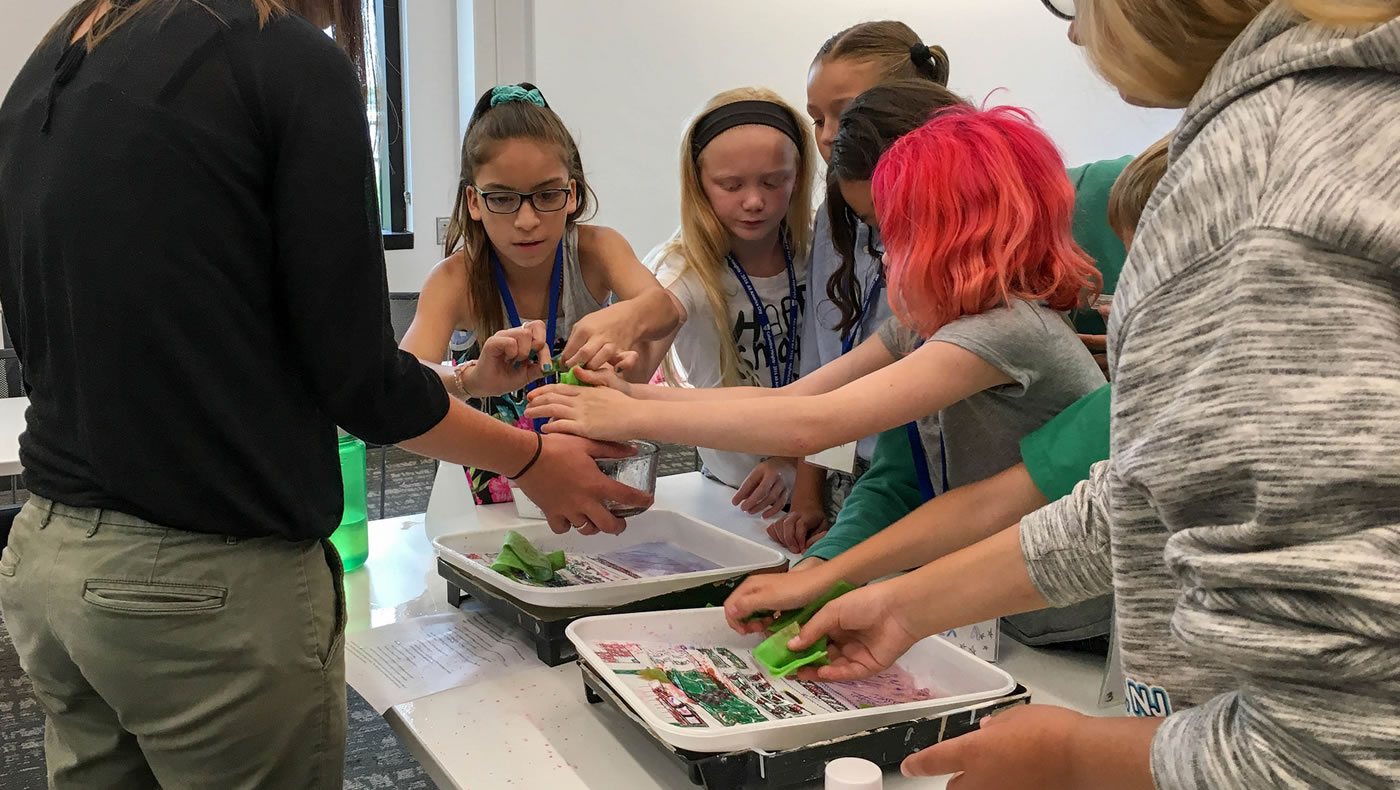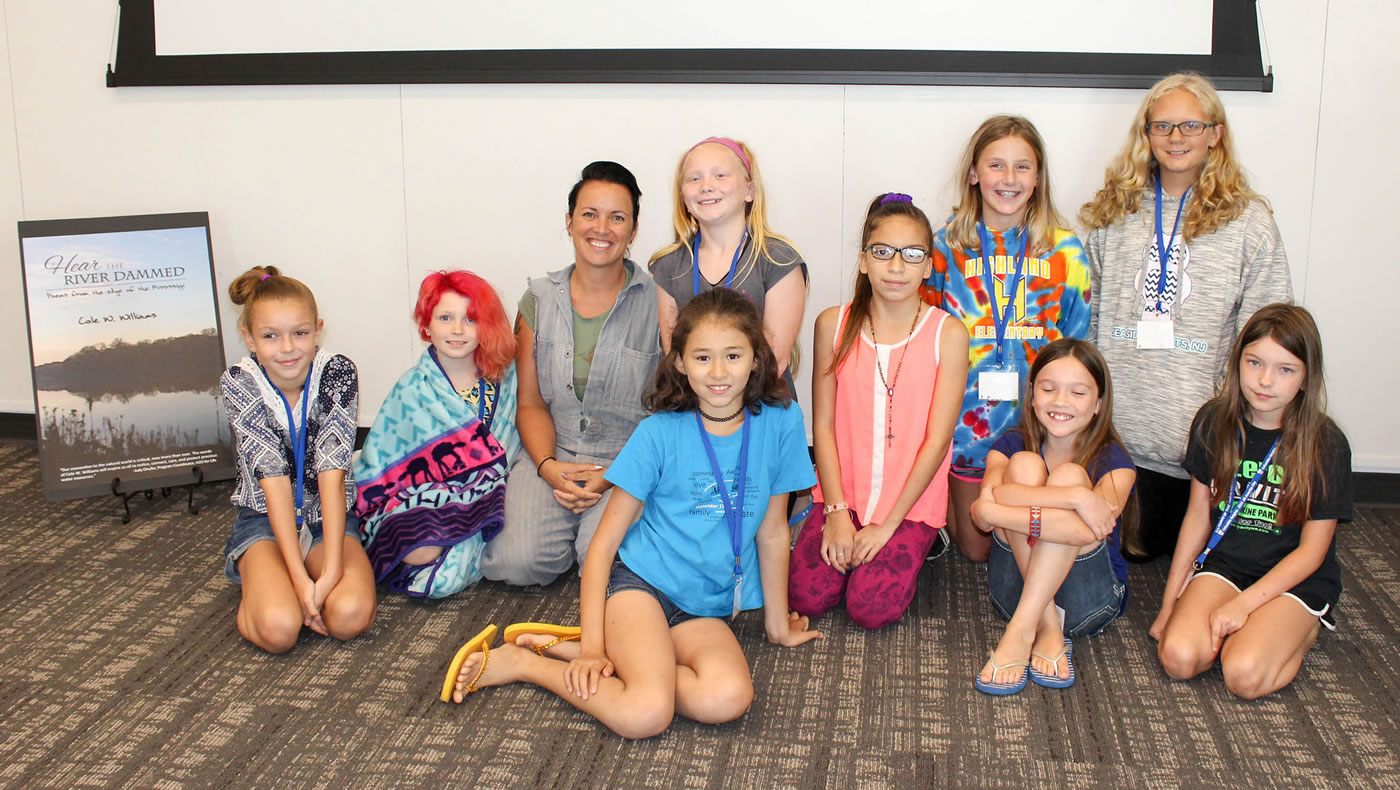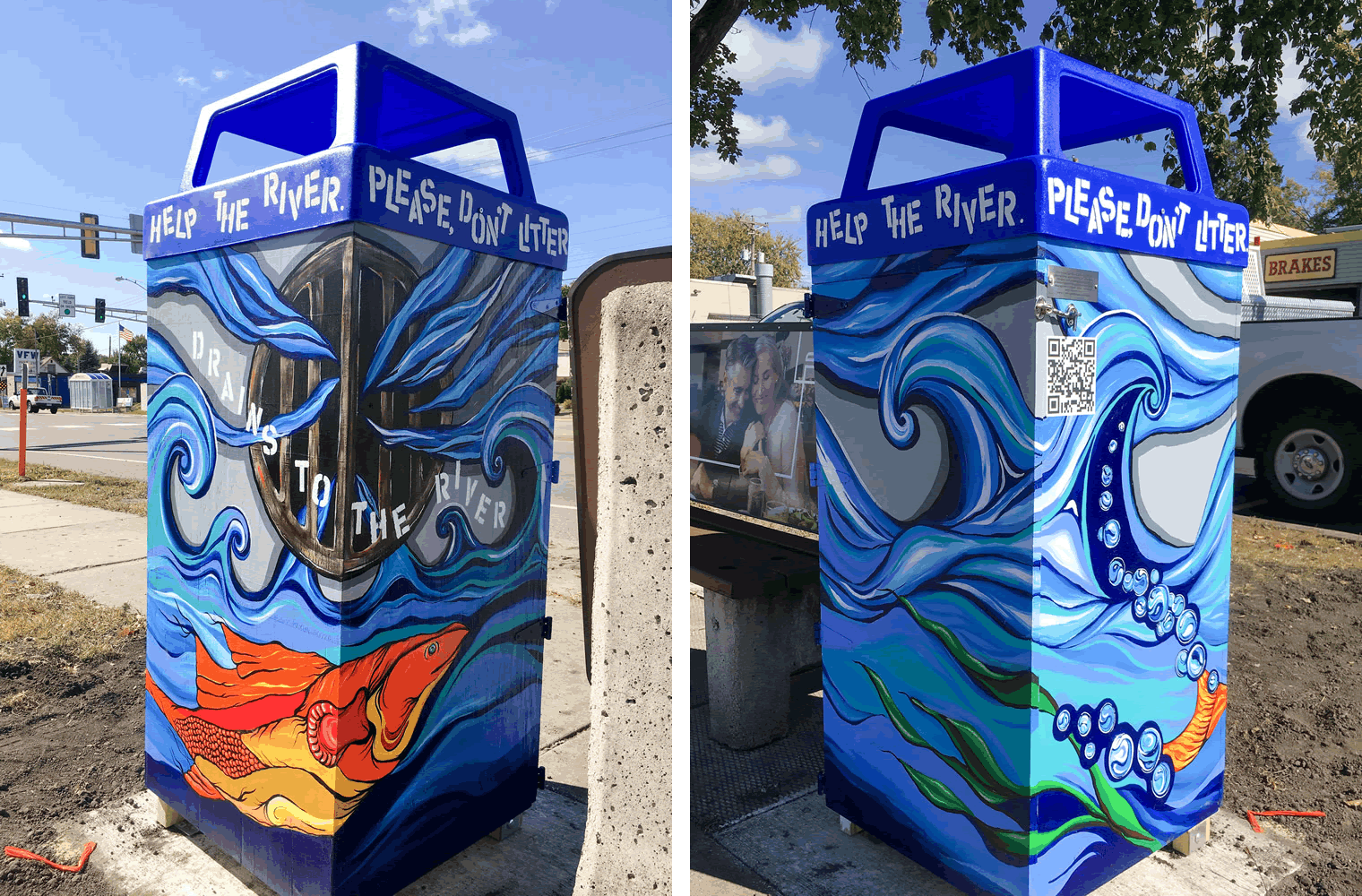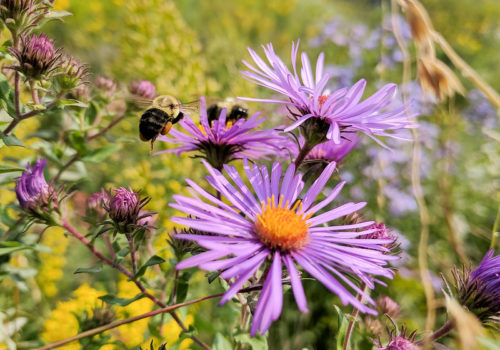News / November 06, 2017
Art project inspires community to protect the Mississippi River
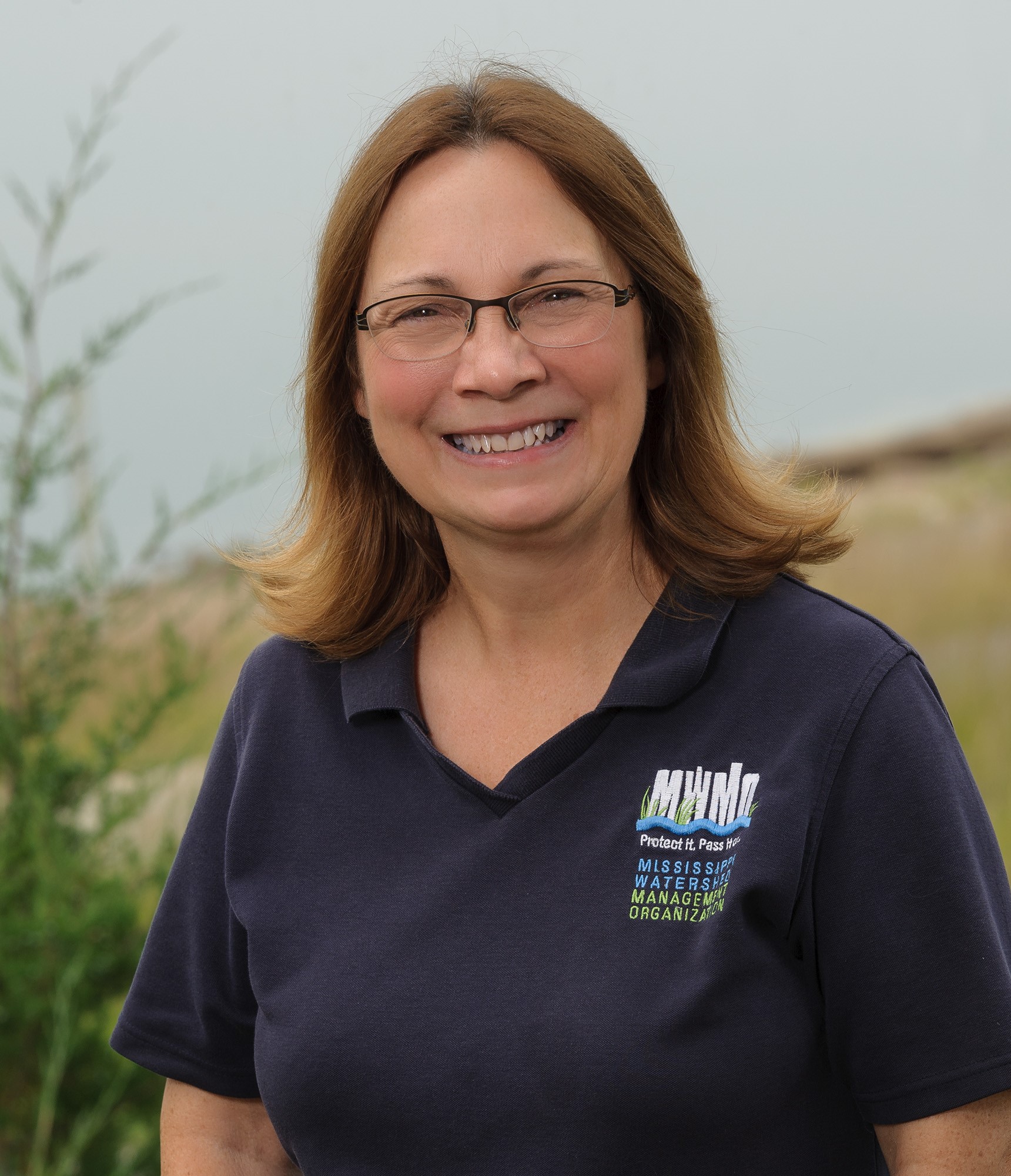
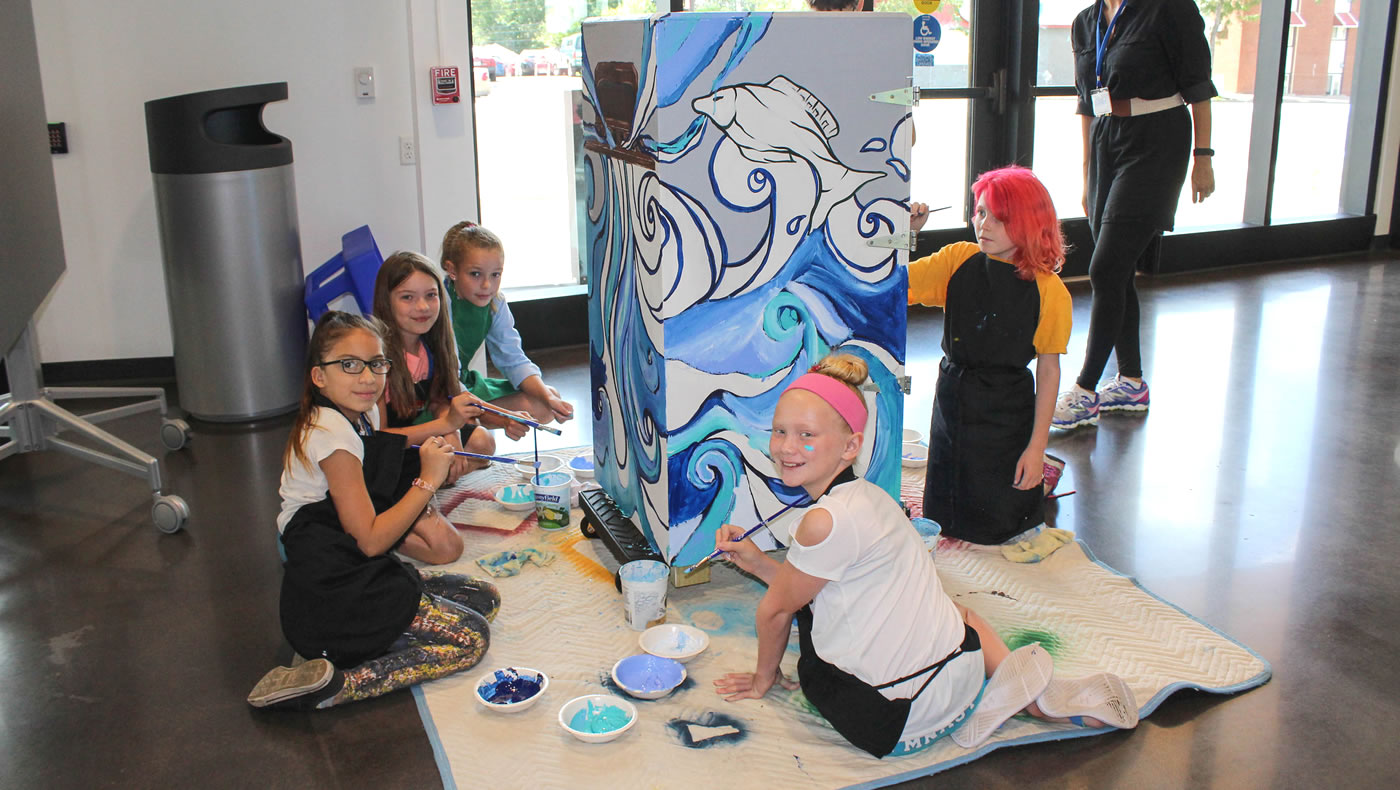
She’d had enough! Rebecca Krueger, a Columbia Heights resident, artist, and art educator, was thoroughly frustrated with the amount of trash she found in her neighborhood. Blowing litter and other garbage not only soiled the local landscape, but made her worry about the impression it gave others of Columbia Heights.
Krueger decided to do something about it. She started by picking up trash — a lot of trash! Over time, she observed patterns in types of litter and noticed where it accumulated. Paper cups, straws, wrappers, plastic bottles, bags and other items were often left near bus stops. She also noticed there were few, if any, waste containers along Central Avenue for pedestrians to toss garbage in as they traveled in this area.
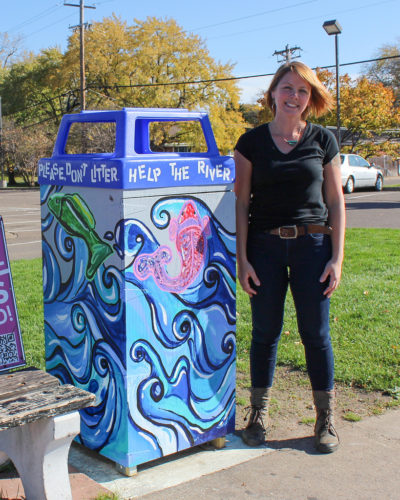
Spurred on by the need to solve this issue, Krueger realized people needed trash cans so they could dispose of waste properly. She’d occasionally seen some in the area, but they were ugly or damaged and business owners didn’t always empty them in a timely way; garbage was still spilling into streets. She came up with a new solution in the form of a public art project: “Trash Can Murals” to be painted on the sides of small wooden sheds that would house garbage cans placed at strategic spots along Central Avenue. All she needed were the right partners and funding to make it a reality.
An acquaintance told her about HeightsNEXT, a local civic group, that might have ideas to help her accomplish this goal. While meeting with their clean-up committee, Krueger was surprised to learn that trash not only presented health and aesthetic problems, but a threat to the Mississippi River. Litter that falls into the street is not caught or filtered out before rain (or melting snow) carries it directly into the river through the stormsewer system. Committee members suggested she contact the City of Columbia Heights and the Mississippi Watershed Management Organization to see if a partnership could be forged to move the project forward.
Columbia Heights City Planner Elizabeth Holmbeck was excited to hear from Krueger and energized by a resident’s willingness to tackle an issue in such a positive way. According to Holmbeck, the city hadn’t tried to use public art as a solution to problems yet, and they were eager to support the project to test its effectiveness on an issue in which they shared concerns. To fund the project, the city applied for and received an MWMO Stewardship Fund Mini Grant. The grant allowed them to use Krueger’s skills to produce two trash can mural sheds and develop education to engage pedestrians in using trash cans to stop this pollution from entering storm drains.
Holmbeck and Columbia Heights Public Works Director Kevin Hansen worked with Krueger to plan sites for the murals and arranged for the trash cans (housed in the trash can mural sheds) to be emptied on a regular basis to prevent past problems.
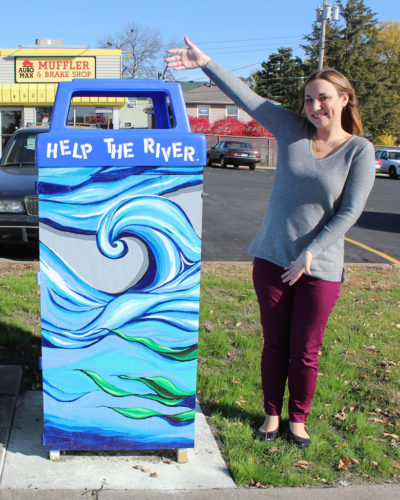
Krueger and Holmbeck collaborated with several other groups to implement the project and saw their interest grow in the project’s goals, too. MnDOT gave the city permission to place the trash can mural sheds on the selected sites. A volunteer woodworker helped Krueger design a wood shed to house the trash cans and act as a “canvas” for the murals. City and MWMO staff offered suggestions to help design images and messages that showed the connection between trash and stormwater in Columbia Heights flowing directly into the river. Based on these conversations, Krueger decided to add a simple slogan to boost direct action by users by painting “Help the River, Please don’t Litter” on the trash can mural shed lids.
Once she had the basic design and partners in place, Krueger compiled educational resources to help trash can users learn about watersheds and how water and pollutants like trash, leaves, grass, oil, and dog waste flow over land into storm drains and to the river. A QR Code located on the sheds’ sides gives users access to the educational Trash Can Mural Project website, where readers can take a pledge to protect the environment and learn about actions they can take to protect water quality in the Mississippi River.
Project partners agreed that youth needed to learn about the impact of trash and how they could be part of the solution. After all, they could be the most enduring champions of this important message. In response, Krueger created a three-day Trash Can Mural Project Camp for youth. It was no small undertaking, but fortunately Krueger had help. She shared the project with Columbia Heights Public Library staff, who enthusiastically joined the partnership. Familiar with the importance of keeping pollutants out of stormwater, library staff hosted, promoted, and joined HeightsNEXT volunteers in helping Krueger run the camp. They held it at the new library site, which is lined with stormwater-friendly features like rain gardens, trees, native plants, and permeable pavement. In Krueger’s words, “The support and excitement the Columbia Heights Public Library gave to the project was unbelievable!”
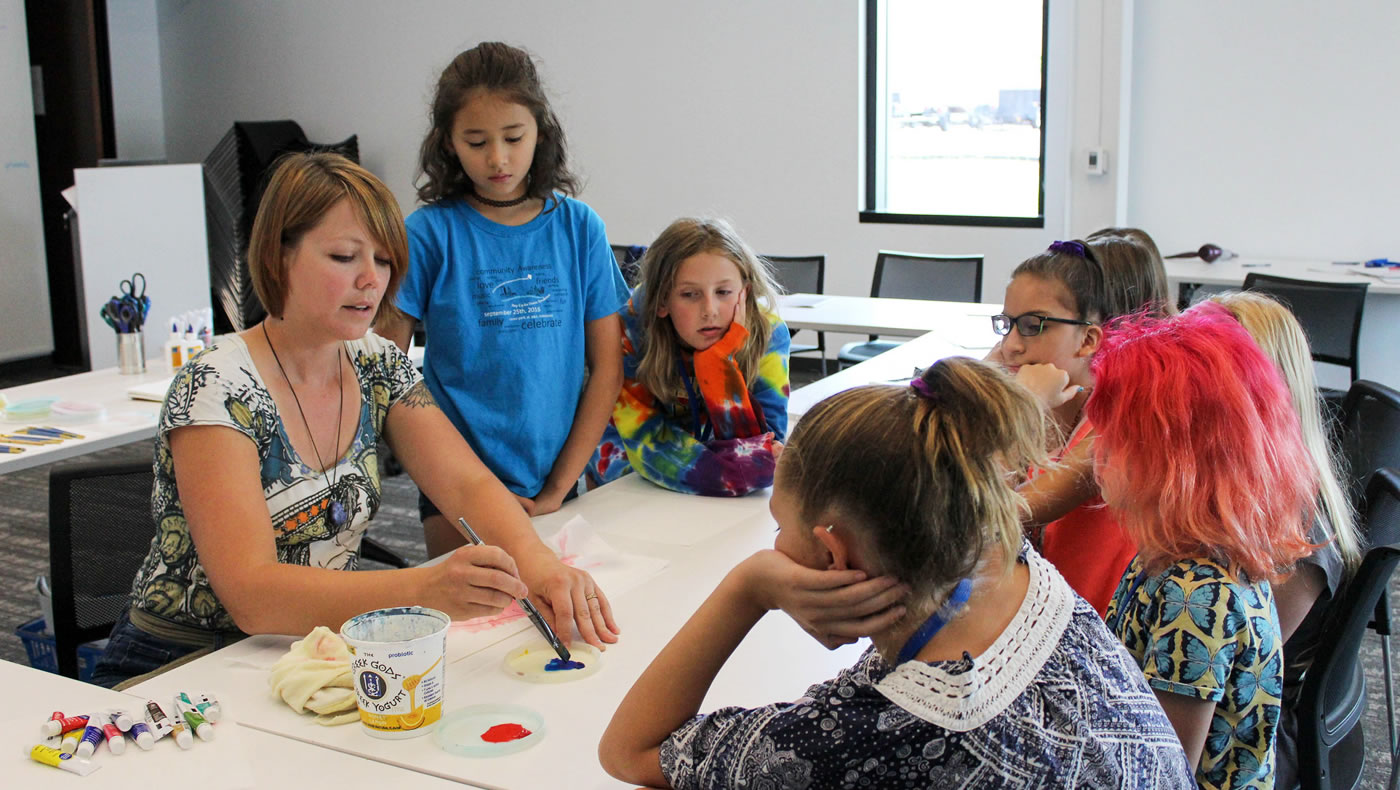
During the Trash Can Mural Project Camp, Krueger taught youth how they could reduce litter, use public art as a way to protect the river, and reuse materials instead of discarding them. They also painted one of the cans’ murals and created posters and art that encourage others to become water stewards. Representatives from the city and the MWMO offered lessons on watersheds and stormwater. Local author, poet, and river advocate Cole Williams visited with campers about how she uses her work and projects to encourage others to protect the Mississippi.
In September, the Trash Can Murals were installed at two sites in Columbia Heights. One is located at the northeast corner of 45th and Central Avenues and one at the northeast corner of 46th and Central Avenues. Now, Krueger is monitoring the Trash Can Mural Project website to see if people are taking the pledge and exploring the resources it offers for learning about watersheds. To date, she has already received interest in the project from as far away as Jackson, Mississippi, where they wanted to implement a similar project in 11 different schools in their community. She will share the information with both the City of Columbia Heights and the MWMO to provide ideas about future engagement.
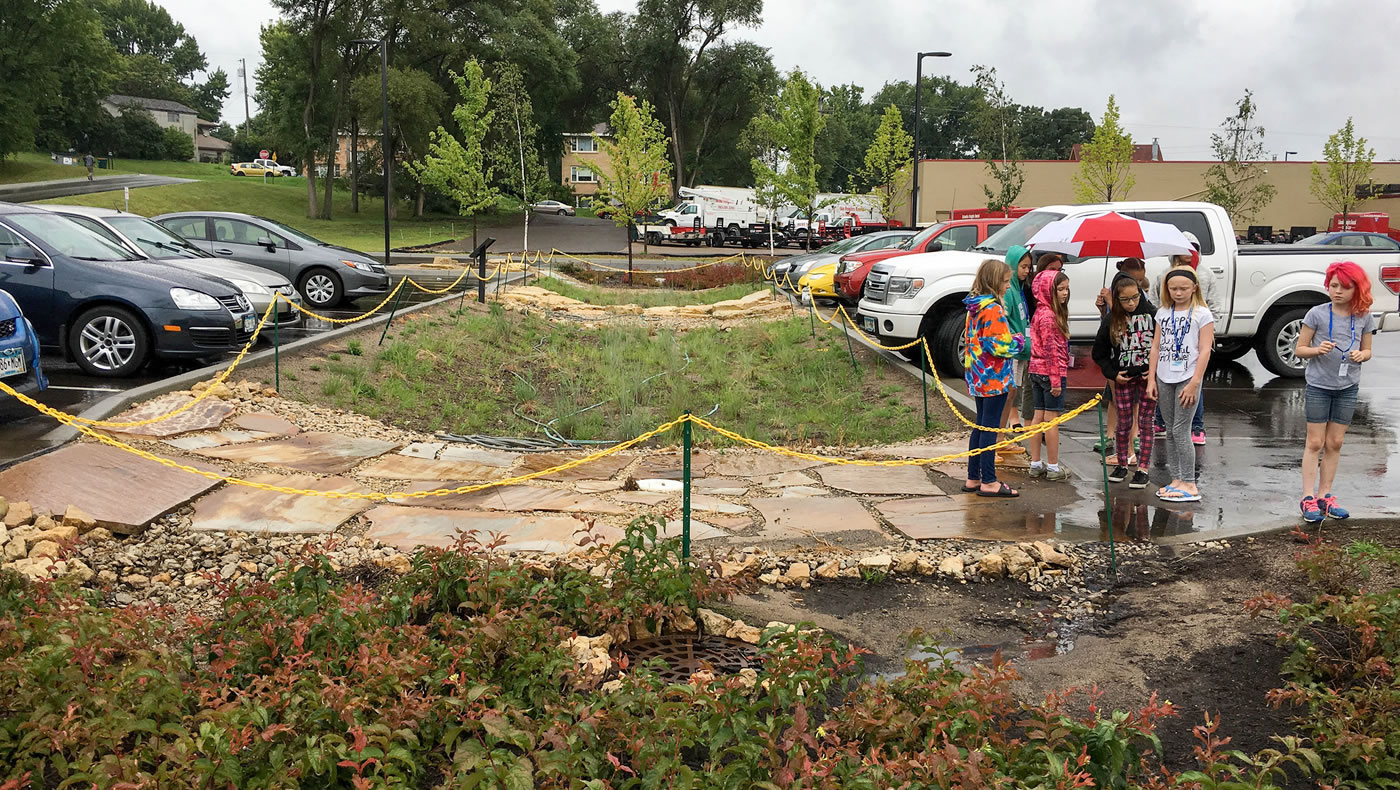
City staff are pleased with the important message and added vibrancy the Trash Can Mural Project brought to Central Avenue as the city works to address the litter issue. The city has also grown from this experience by using it to create a list of guidelines it can use when working with other artists wanting to create public art in the city.
Recently, Krueger was hired as an arts educator for the Northeast Metro Intermediate School District 916 (Metro Heights Academy). Her new employer was intrigued with the project, and Krueger is optimistic that it will spur ideas for students to find ways to protect the watersheds in which they live.
While this grant supported public art to engage residents in connecting with and protecting the Mississippi River and its watershed, the MWMO also partners with artists to feature exhibits in our lobby gallery with similar themes. You can learn more about Stewardship Fund Grants or exhibiting artwork at the MWMO on our website.
